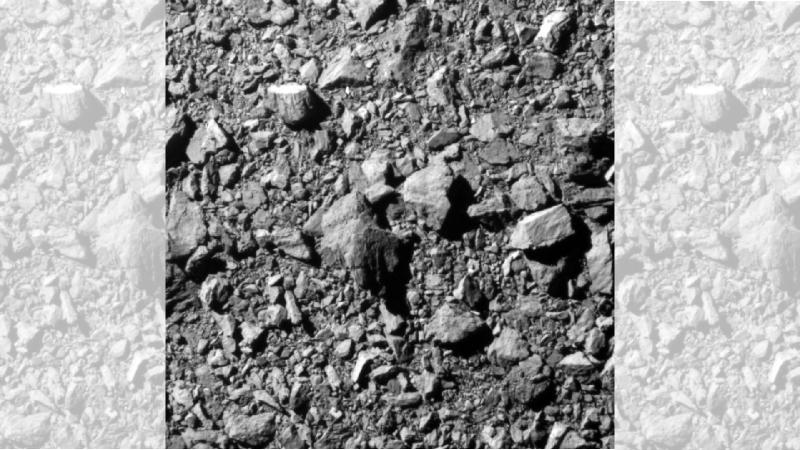NASA's DART mission successfully knocks asteroid off course, Earth can now defend itself
By: Gaurvi Narang (ThePrint)


Interesting milestone today in the name of planetary defense, but is the technology capable of stopping or redirecting much larger asteroids or planetary killers and avert an extinction level event (ELE)? Or will we need Bruce Willis and Ben Affleck to land on such a body, drill to exactly 800 feet and detonate a nuclear device to properly redirect the fragments? Anyway, an interesting read and some cool video. Enjoy!

While the asteroid was of no threat to Earth, but the test demonstrated our capability to resist asteroid impact.
Gaurvi Narang 27 September, 2022 11:12 am IST
Video available here:
https://twitter.com/i/status/1574539270987173903
New Delhi: For the first time, NASA's Double Asteroid Redirection Test or DART has successfully knocked an asteroid off its course, demonstrating its ability to defend the planet from potentially disastrous asteroid impact in the future.
Mission control at the Johns Hopkins Applied Physics Laboratory (APL) in Laurel, Maryland, announced the successful impact Tuesday — which is humanity's first test to resist an asteroid's impact.
IMPACT SUCCESS! Watch from #DARTMIssion's DRACO Camera, as the vending machine-sized spacecraft successfully collides with asteroid Dimorphos, which is the size of a football stadium and poses no threat to Earth. pic.twitter.com/7bXipPkjWD — NASA (@NASA) September 26, 2022
"We're embarking on a new era of humankind, an era in which we potentially have the capability to protect ourselves from something like a dangerous, hazardous asteroid impact," said Lori Glaze, director of NASA's Planetary Science Division. "What an amazing thing. We've never had that capability before."
While Dimorphos did not pose any actual threat to Earth, the mission aimed to test the "kinetic impactor" method which will verify to what extent it is possible to redirect asteroids that might possibly threaten the planet. Using the force of kinetic energy, this crash, that took place today, might save future generations from any real threats.
As expected, the collision has slightly changed the asteroid's motion and path in space, and has successfully given the world a viable mitigation strategy.
While further speculation from telescopic observations are underway to clearly determine the complete success of the mission, NASA has confirmed that they expect the impact to shorten Dimorphos' orbit by about one percent or roughly 10 minutes. Over the next few weeks, Dimorphos' orbital change will be studied along with the debris ejected from the crash.
DART slammed itself into the asteroid which was 9.6 million kilometres away at 22,500 kilometres per hour.
Roughly four years from now, the European Space Agency's Hera project will conduct detailed surveys of both Dimorphos and asteroid Didymos, with a particular focus on the crater left by DART's collision and a precise measurement of Dimorphos' mass, NASA says.
"We are not aware of a single object right now threatening the Earth in the next 100 years. But there eventually will be one. We can deduce that from the geological records of our planet and even data from the Moon. We want to test this technology now so that it is ready in case we ever need it," said Thomas Zurbuchen, the associate administrator for the Science Mission Directorate at NASA, during a press conference on 12 September.
The most destructive celestial impact happened 65 million years ago when an asteroid with a 5 kilometer radius crashed into Earth and gave us what we know today as the Yucatan Peninsula. The impact wiped out numerous plant and animal species including dinosaurs.
In 2019, an asteroid the size of a football field, also passed by Earth closely, and another which was the size of a 747 jet came extremely close in 2021. But all these asteroids were not expected guests, they were cosmic surprises, scientists said.
This first event which could indeed go a long way in preventing something disastrous, was launched in November 2021 and has now attained fruition. The historic was live streamed on NASA TV, which is NASA's own and also, the space agency's YouTube channel.
"No, this is not a movie plot," NASA Administrator Bill Nelson tweeted earlier in the day. "We've all seen it on movies like 'Armageddon', but the real-life stakes are high," he said in a prerecorded video.
Tonight @NASA will crash an uncrewed spacecraft into an asteroid. On purpose.
Yes, you read that correctly. And no, this is not a movie plot.
The #DARTmission is the world's first mission to test technology for defending Earth against potential asteroid or comet hazards! pic.twitter.com/XCBtdsgVV0
— Bill Nelson (@SenBillNelson) September 26, 2022
Recording the impact
While further scientific studies are currently underway, the impact will also be studied with the help of data gathered from these devices.
The spacecraft has been carrying its own mini photography device, the LICIACube (Light Italian CubeSat for Imaging Asteroids) to capture the event up close, which had been deployed from the spacecraft on 11 September. The device is programmed to record and capture DART's impact, getting images of the debris ejected from the collision and a view of the newly-formed crater.
The Italy-built cubesat was to observe the crash from about 1,000 kms away and then zoom into the fresh site of debris and collision.
The spacecraft had also been transmitting other images of the asteroid which shall be captured by its Didymos Reconnaissance and Asteroid Camera for Optical Navigation (DRACO) camera.
During the event, the images streamed back to Earth were at a rate of one per second. The boulder-covered surface of the egg-shaped asteroid reminded scientists of Ryugu and Bennu, two other asteroids that have recently been visited by spacecraft. Dimorphos is thought by scientists to be an asteroid rubble pile comprised of weakly-connected rocks.
Dimorphos is relatively unknown
Dimorphos is the size of a football field and does not pose any immediate threat to Earth. Scientists are aware of Dimorphos' size and history, but still do not understand its chemical composition.
The DART mission not only tests the viability of a device that can offset the impact of a potential threat, but also bridges the gap to create a better understanding of the asteroid itself.
Dimorphos is 520 feet or 160 metre wide and is orbiting the much larger 2,560 feet or 780 metre wide asteroid called Didymos. While Didymos is still better understood in the scientific community, Dimorphos requires further speculation. "We know that it's a separate body, but we know very little about the shape of the asteroid. We don't know if Dimorphos is elongated or spherical; we don't know whether it's a single rock or a pile of boulders," said Terik Daly, a deputy instrument scientist on DART's Didymos Reconnaissance and Asteroid Camera for Optical navigation (DRACO), and a planetary scientist at Johns Hopkins Applied Physics Laboratory, which manages the DART mission for NASA to Space.com.
It is usually recommended that a 5-10 years buffer or notice period is essential for Earth to prepare itself against a killer asteroid attack. And now that all has gone well with the mission so far, we may just be one step closer to a remarkable feat that shall aid humanity from any possible celestial threats.
Also read: NASA plans to destroy the International Space Station. But here are the risks involved

Tags
Who is online
45 visitors


Not as entertaining as the movie Armageddon, but still worth learning about.
Surely whether or not Earth can defend itself against an approaching asteroid depends on the size and weight of the asteroid.
Of course... and don't call me Surely.
Still, it is a good feeling. A great way to start the day.
If only earth could defend itself against earth.
Well it's an attempt to divert an asteroid that is capable of destroying a city....
The asteroid that killed off the Dinosaurs was estimated to be a few miles wide...
What happens in the Armageddon scenario where the asteroid is the size of Texas?
This won't work.... And the requirement that they have 5-10 years advance notice? The last near-earth asteroid encounter that the media reported wasn't even seen until it was five or six days out... Our ability to track can't track those that are going to come close until they are right on top of us..
We are a long ways from giving the earth a shield in the shooting gallery...
Science and innovation are often a series of baby steps rather than giant leaps
It won't work for something that large but something much smaller headed toward earth could release as much energy as a nuclear bomb.
This is a great proof of concept. Let's hope a real threat is quite far in the future when we have perfected a system that can handle it.
That’s good shooting.
From what I read, it’s premature at this moment to declare that the asteroid’s path has been changed. Even more premature to suggest that any change was significant. It will take weeks of observation.
True - Here is another article indicating the details of that.
Apparently there is another craft that was watching the impact and images from it will filter back slowly to earth.
I am impressed that they hit the target. To me that is a critical proof of concept. The next proof of concept will be an observed deflection.
We that that here every day..
It doesn't impress me, why? they have been crashing things into the moon and other celestial objects for decades... Critical proof of concept? when they were landing on the moon they were crashing the expended S4B's into the moon, until they measured an almost imperceptible slowing of the moons rotation around the earth and stopped doing it, sending them into solar orbit instead...All the proof of concept needed, but some reasonably intelligent person who understands the physical dynamics involved would know of the reaction of one body in motion striking another... Observed deflection? if they know that continually smashing huge rocket stages into the moon will slow it down and change it's orbital mechanics, they already knew....
Since there is nothing new they didn't already know, where is the great accomplishment? you want a clue?
They are waiting to see if smashing into the smaller asteroid changes the course of the larger one of the binary pair.... Gravitational dynamics are what they are testing for in this experiment.
Now if it proves out the theory, that will be somewhat impressive, to see it actually happen... But the long proven rules of gravitational dynamics says it will happen...
They have run an experiment to see if the theory and mathematical calculation are actually what does happen...
A relatively minor experiment.... Hopefully the expense leads to something worthwhile...
Nothing new here, just a different application of already known physical phenomena....
Quite. This showed that we are capable of targeting a relatively tiny body (compared to a moon or a planet) a mere 520-feet across (vs. the 3275 km diameter of the moon), that would be 9.6 million km away (unlike the moon at 386,000 km away), whose path is non-orbital (unlike moons and planets) and hit it on the targeted spot (the center) at 22,500 kph. This is not a probe that gently approaches its landing spot, it is high-speed projectile that has one shot to hit its fast moving tiny target while moving, itself, at a high velocity.
We have never accomplished such a feat until now.
I do not take that for granted. That is quite an impressive accomplishment and is a critical proof of concept because DART illustrates that we can (with impressive precision) hit dangerous targets with tiny high-velocity projectiles.
The next critical proof of concept, as I noted, would be to deflect it per plan. They may have accomplished this as well. You dismiss this too as no big deal simply because we understand the physics. What you fail to grasp is that knowing how a body in theory will react to a transfer of momentum is profoundly different from actually achieving said transfer in reality. This is not a test of the physics, it is a test of applying the physics on a real-life, challenging situation. By your reasoning, if we developed technology that could intercept a bullet in mid-flight with a bee bee, you would dismiss it because the physics was already known.
You think I need a clue? I am not the one who fails to comprehend the significance of this feat and equates it to imprecise crashing of spacecraft on large, predictable bodies such as the moon.
A naïve assessment; going from a complex mathematical model based on a solid understanding of physics to the first successful implementation of same is rarely a small feat. Of course those who have never experienced accomplishing something new and complex do not appreciate what is involved.